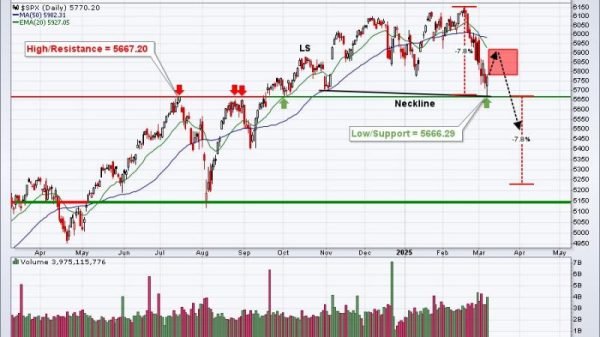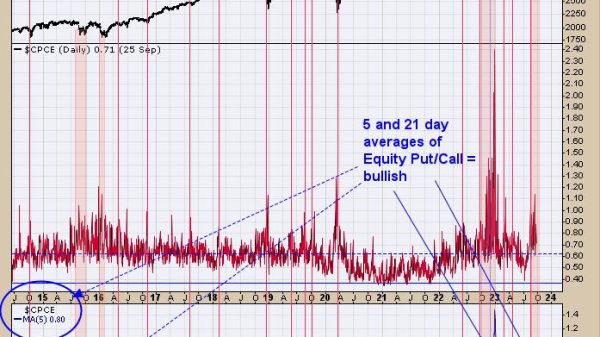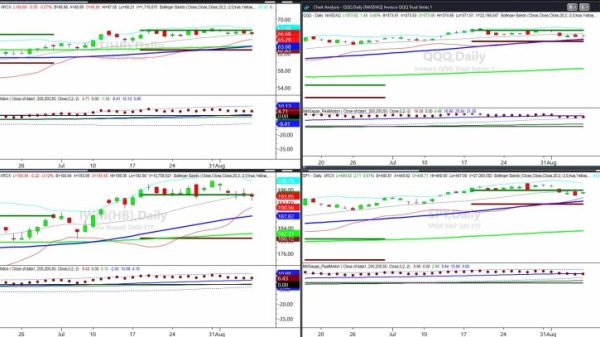Bitcoin is prone to price volatility, with wide swings to the upside and downside. The most recent upswing comes alongside growing institutional demand for the cryptocurrency as an attractive asset class.
Bitcoin’s value has rallied over the last few quarters, increasing from about US$26,000 in mid-September 2023 to an all-time high of around US$73,000 in mid-March of this year. Of course, there have been bumps in the road — in January, prices sank to US$39,000 despite the launch of the the first US spot Bitcoin exchange-traded funds (ETFs). But as the sector gets closer to the next halving event, Bitcoin attention has once again gone hyperbolic.
Will this upward trajectory continue, or is Bitcoin’s value likely to start plummeting again in the immediate future?
That’s not an easy question to answer, and buying Bitcoin isn’t a simple decision. Before you enter the market, you need to understand both Bitcoin and the wider crypto market. Read on to learn the basics.
What gives Bitcoin its value?
Bitcoin was the world’s first cryptocurrency, created in January 2009 by the mysterious Satoshi Nakamoto.
Conceived as a virtual alternative to fiat currency, Bitcoin is built atop blockchain technology, which it uses for both validation and security. Blockchain itself is a distributed digital ledger of transactions, operating through a combination of private keys, public keys and network consensus.
The best analogy to explain how this works in practice involves Google Docs. Imagine a document that’s shared with a group of collaborators. Everyone has access to the same document, and each collaborator can see the edits other collaborators have made. If anyone makes an edit that the other collaborators don’t approve of, they can roll it back.
Going back to Bitcoin, the virtual currency primarily validates transactions through proof of work. Also known as Bitcoin mining, this competitive and incredibly resource-intensive process is the means by which new Bitcoins are generated.
How it works is deceptively simple. Each Bitcoin transaction adds a new ‘block’ to the ledger, identified by a 64 digit encrypted hexadecimal number known as a hash. Each block uses the block immediately preceding it to generate its hash, creating a ledger that theoretically cannot be tampered with. Bitcoin miners collectively attempt to guess the encrypted hex code for each new block — whoever correctly identifies the hash then validates the transaction and receives a small amount of Bitcoins as a reward.
From an investment perspective, Bitcoin toes the line between being a medium of exchange and a speculative digital asset. It also lacks any central governing body to regulate its distribution. As one might expect, these factors together make Bitcoin quite volatile, and therefore somewhat risky as an investment target.
As for the source of this volatility, Bitcoin’s value is primarily influenced by five factors.
1. Supply and demand
It’s widely known that no more than 21 million Bitcoins can be produced, and that’s unlikely to happen before 2140.
Only a certain number of Bitcoins are released each year, and this rate is reduced every four years by halving the reward for Bitcoin mining. The last of these ‘halvings’ occurred in May 2020, and the next one is due this April. When it happens, there may be a significant increase in Bitcoin demand, largely driven by media coverage and investor interest.
Bitcoin demand is also strengthening in countries experiencing currency devaluation and high inflation.
It would be remiss not to mention that Bitcoin represents an ideal mechanism for supporting illicit activities — meaning that increasing cybercrime could itself be a demand driver.
2. Production costs
It’s said that Bitcoin benefits from minimal production costs. This isn’t exactly true, however. Solving even a single hash requires immense processing power, and it’s believed that crypto mining collectively uses more electricity than some small countries. It’s also believed that miners were largely responsible for the chip shortage experienced throughout the pandemic due to buying and burning out vast quantities of graphics cards.
These costs together have only a minimal influence on Bitcoin’s overall value. The complexity of Bitcoin’s hashing algorithms and the fact that they can vary wildly in complexity are far more impactful.
3. Competition
Bitcoin’s cryptocurrency market share has sharply declined over the years. In 2017, it maintained a market share of over 80 percent. Bitcoin’s current market share is just over 52 percent.
Despite that fall, Bitcoin remains the dominant force in the cryptocurrency market and is the marker by which many other cryptocurrencies determine their value. However, there is no guarantee that this will always remain the case. There are now scores of Bitcoin alternatives, known collectively as altcoins.
The most significant of these is Ethereum. Currently accounting for roughly 16 percent of the crypto market, Ethereum’s market cap has increased by about 200 percent from last year. Some experts have suggested that Ethereum may even overtake Bitcoin, but others don’t see that as a possibility in the near future.
4. Regulations
Bitcoin may itself be unregulated, but it is not immune to the effects of government legislation. For instance, China’s 2021 ban of the cryptocurrency caused a sharp price drop, though it quickly rallied in the following months. The European Union has also attempted to ban Bitcoin in the past, and the US was recently accused of trying to do the same.
A ban in either region could be devastating for Bitcoin’s overall value.
5. Public interest and media coverage
As with any speculative commodity, Bitcoin is greatly influenced by the court of public opinion.
Perhaps the best example of this occurred in 2021. At that time, a tweet from Tesla’s (NASDAQ:TSLA) Elon Musk caused Bitcoin’s price to drop by 30 percent in a single day. This also wiped about US$365 billion off the cryptocurrency market.
Will Bitcoin keep going up?
Bitcoin is notoriously volatile, making it difficult to judge where the cryptocurrency is going next. Currently, Bitcoin sits at a price of roughly US$62,800. This is a drastic improvement from December 2022, when it fell to US$17,000.
What caused such a steep decline? Per NASDAQ, Bitcoin’s dramatic fall can be traced back to a few factors.
First and foremost were the harsh economic conditions of 2022. In order to combat supply shortages and inflation, the US Federal Reserve hiked interest rates aggressively. The war in Ukraine introduced even further uncertainty.
In response, most investors reined in discretionary spending and became less willing to speculate on risky or volatile assets. The catastrophic failure of crypto exchange FTX also left a sour taste in the mouths of investors to the tune of a nearly US$1 billion loss. Already wary of Bitcoin, many took FTX’s failure as a sign that their initial instincts were correct.
That said, Bitcoin didn’t actually take that long to recover from its post-FTX crash — by mid-January 2023, it had already rallied. After that, the cryptocurrency experienced one of its most promising years in recent memory. Its volatility has even dropped considerably, with Bloomberg noting that it’s the lowest it’s ever been since 2020.
Remember, however, that there’s no such thing as a guaranteed investment, especially when it comes to cryptocurrencies. On the one hand, there’s virtually no chance that Bitcoin will experience a crash to zero like Terra Luna. On the other hand, we also cannot take for granted that its value will continue to climb. It all depends on who you ask.
For example, veteran analyst Peter Brandt said in February that if Bitcoin could break past its previous high, the cryptocurrency could easily reach a new record of US$200,000 by September 2025. ARK Invest CEO Cathie Wood even believes Bitcoin could be worth over US$75 trillion by 2030. Twitter co-founder Jack Dorsey is also a major proponent of Bitcoin, believing that it has the potential to one day replace fiat currency entirely.
Crypto industry specialists surveyed in early 2024 by UK fintech firm Finder shared somewhat more conservative estimates, although they are still quite promising and point to prices above US$100,000 in the near future. They believe that Bitcoin could rise to a value of roughly US$122,688 by 2025, and US$366,935 by 2030.
Not everyone is so optimistic about Bitcoin’s prospects. Pav Hundal, lead market analyst at Swyftxt, has expressed concerns about Bitcoin’s future in the context of continued geopolitical upheaval and economic uncertainty. Billionaire investor Warren Buffet, meanwhile, has not minced words regarding his opinion on Bitcoin and its future.
According to Buffet, Bitcoin is an unproductive asset with no unique value. He also feels that it doesn’t count as a true currency — in fact, he called it “rat poison”. Moreover, he believes that the crypto market as a whole will end badly.
Regardless of whether you believe Bitcoin’s proponents or naysayers, it’s clear that it has some incredibly prominent backers in both the investment world and the wider business landscape. Business analytics platform MicroStrategy (NASDAQ:MSTR) is by far the largest public company in the Bitcoin space, with 174,530 Bitcoins to its name. Marathon Digital Holdings (NASDAQ:MARA) has 13,726 Bitcoins and Tesla holds 10,500 Bitcoins.
There are also plenty of individuals with large holdings, the most significant of which is believed to be Bitcoin’s creator, Satoshi Nakamoto. Other prominent names include Michael Saylor, Cameron and Tyler Winklevoss and Tim Draper.
How to smartly invest in Bitcoin?
Bitcoin is more stable than it’s been in years, and the next halving is fast approaching. Taking current market conditions into account, now might well be the perfect time to invest, so long as you remain cognizant of the risks.
But if you opt to jump into the market … what comes next?
What is the process for buying Bitcoin?
The good news is that investing in Bitcoin is actually quite simple. If you’re purchasing through a stockbroker, it’s a similar process to buying shares of a company. Otherwise, you may need to gather your personal information and bank account details. It’s recommended to secure your network with a VPN prior to performing any Bitcoin transactions.
The first step in purchasing Bitcoin is to join an exchange. Coinbase Global (NASDAQ:COIN) and Binance are two of the most popular, but there’s also Kraken and Bybit. If you’re an advanced trader outside the US, you might consider Bitfinex.
Once you’ve chosen an exchange, you’ll need a crypto wallet. Many first-time investors choose a software-based or ‘hot’ wallet either maintained by their chosen crypto exchange or operated by a service provider. While simpler to set up and more convenient overall, hot wallets tend to be less secure as they can be compromised by data breaches.
Another option is a ‘cold’ wallet — a specialized piece of hardware specifically designed to store cryptocurrency. It’s basically a purpose-built flash drive. If you plan to invest large amounts in crypto, a cold wallet is the better option.
Once you’ve acquired and configured your wallet, you may choose to connect either the wallet or your crypto exchange account to your bank account. This is not strictly necessary, and some seasoned investors don’t bother to do this.
Finally, with your wallet fully configured and your exchange account set up, it’s time to place your order.
Best practises for investing in Bitcoin
The most important thing to remember about Bitcoin is that it is a high-risk asset. Never invest money that you aren’t willing to lose. Treat Bitcoin as a means of slowly growing your existing wealth rather than an all-or-nothing gamble.
As with other investments, it’s important to hedge your portfolio. Alongside Bitcoin, you may want to consider investing in other cryptocurrencies like Ethereum, or perhaps an altcoin. You may also want to explore other blockchain-based investments, given that even the stablest cryptocurrencies tend to be fairly volatile.
It’s also key to ignore the hype surrounding cryptocurrencies. Recall how many people whipped themselves into a frenzy over non-fungible tokens in 2022. More than 95 percent of the NFTs created during that time are now worthless.
Make decisions based on your own market research and advice from trusted — and more importantly, certified — professionals. If you’re putting up investment capital based on an influencer’s tweets, you are playing with fire.
You should also start small. A good rule of thumb is not to dedicate more than 10 percent of your overall capital to cryptocurrency. Even that number could be high — again, it’s all about moderation.
Make sure to prioritize cybersecurity as well. Cryptocurrencies are an immensely popular target for cybercriminals. In addition to maintaining a cold wallet, make sure you practise proper security hygiene. That means using a VPN and a password manager while also exercising mindfulness in how you browse the web and what you download.
Finally, make an effort to understand what cryptocurrencies are and how they work. One of the reasons Sam Bankman-Fried was able to run FTX as long as he did was because many of his investors didn’t fully understand what they were putting their money into. Don’t let yourself be fooled by buzzwords or lofty promises about Web3 and the metaverse.
Do your research into the technology behind it all. That way, you’ll be far better equipped to recognize when something is a sound investment versus a bottomless money pit.
When should you buy and sell Bitcoin?
Generally speaking, Bitcoin is subject to the same rules as any investment. That is to say, you should always try to buy low and sell high. Unfortunately, given how dramatically Bitcoin’s value tends to fluctuate, that’s often easier said than done. Again, it’s prudent to pay attention to the market and listen to the experts.
What is indirect crypto investing?
Given Bitcoin’s volatility, it’s understandable that you might be leery of making a direct investment. The good news is that you don’t have to. You can indirectly invest into the crypto space through mutual funds, stocks and ETFs.
For more details, check out 11 Canadian Cryptocurrency ETFs and 5 Biggest Blockchain ETFs.
Do a bit of research and touch base with your stockbroker or financial advisor before you go in this direction.
Investor takeaway
Bitcoin is a fascinating asset. Simultaneously a transactional tool and a speculative commodity, it’s attracted the attention of investors almost since it first hit the market. Unfortunately, it’s also incredibly volatile.
For that reason, while current market conditions are favorable for anyone considering buying Bitcoin, it is an asset you should purchase only at your own risk. Because while Bitcoin may have the potential for significant returns, you may also lose most of your investment. If that knowledge doesn’t bother you, then by all means, purchase away.
Otherwise, there are better — less volatile — options for your capital.
FAQs for buying Bitcoin
What is a realistic Bitcoin price prediction for 2025?
Reality and price predictions rarely match up as forecasters have no way of predicting major events like Russia’s war with Ukraine or the COVID-19 pandemic. On top of that, the further away the time period, the less realistic the prediction will be.
As such, there is a massive range for 2025 Bitcoin price forecasts. As of April 2024, forecasts for where the Bitcoin price might land in 2025 range from US$74,456.13 to US$270,929.12. We’ll have to wait a a couple of years to see which are correct.
What does Cathie Wood say about Bitcoin?
ARK Invest CEO Cathie Wood is extremely bullish on Bitcoin, telling Bloomberg in February 2023 that her firm believes the cryptocurrency could reach a value of US$1 million by 2030. A year later, Wood hiked her 2030 bitcoin price prediction astronomically to US$75 trillion.
Securities Disclosure: I, Melissa Pistilli, hold no direct investment interest in any company mentioned in this article.





























